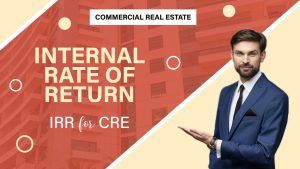Takeaways
- The impact of remote work is widespread throughout the economy.
- Downtowns need a diverse mix of land uses and fewer office buildings.
- Investors are turning to alternative property types for better returns.
If you missed my coverage of the first 5 of 10 trends in the 2024 edition of Emerging Trends in Real Estate, follow the link in the sidebar to that article – Part 1. Otherwise, let’s jump right back in. Here are the remaining 5 of 10 trends.
Trend 6 - Even Further Out of Reach
Housing affordability has been a concern for some time now, but things very much seem to have recently taken a turn for the worse. Initially fueled by soaring housing prices during the COVID-19 pandemic and subsequently exacerbated by historic increases in interest rates for mortgages, housing affordability is now at its lowest level in 30 years, putting home ownership even further out of reach for many Americans.
Going forward, at least in the short term, there seems to be little relief in sight. We simply don’t have enough inventory. New construction of single-family homes all but fell off a cliff during the Great Recession and still hasn’t recovered nearly enough to fill the gap, especially with excessive permitting fees and entitlement costs, restrictive zoning, spiraling construction costs, labor and material shortages, and a lack of available construction financing.
Trend 7 - Portfolio Pivot
Recent market shifts are challenging established norms about how commercial real estate (CRE) portfolios should be built. This includes redefining what constitutes “core” assets. In particular, downtown office towers and regional shopping malls, traditionally the pillars of CRE portfolios for institutional investors, are facing existential declines in tenant demand and property values. As a result, fund managers are scrambling to identify alternative investment opportunities, increasingly considering a range of property types that were previously viewed as niche.
All of a sudden, they’re much more broad-minded and ready to upend traditional definitions of the so-called four food groups in CRE – office, retail, industrial, and multi-family. Mainstream investments within those categories are starting to give way to medical office, data center, experiential retail, self-storage, student housing, and mobile home park, just to name a few. We’re entering an era when these newer options offer more compelling returns compared to traditional investments.
Trend 8 - Not Remotely the Same
The shift to remote work, brought on by the COVID-19 pandemic, might very well be the single most important trend for property market dynamics in generations. Although changes in the office sector are the most easily recognizable, make no mistake about it, the impact of remote work is widespread across property types, the economy, and demographics. When employees don’t have to commute every day, proximity to their workplaces becomes less relevant.
For example, more and more homes will be needed in the suburbs and smaller cities going forward. Living spaces will need to be larger so that employees can work better at home. They’ll be shopping and eating closer to home, instead of near the offices where they used to work. Downtown hotels will have fewer business travelers and host fewer meetings. Transit systems will need to adapt to lower demand and less revenue given the reduced need for daily commutes. The overall impact on the built environment will be profound and long-lasting.
Trend 9 - Downtowns Need to Reinvent Themselves—Again
A debate is currently underway on the future of downtowns in our gateway cities. On one side, the pessimists believe in an “urban doom loop,” a downward spiral of economic calamity that starts with vacant office buildings. The lack of foot traffic puts shops and restaurants out of business; property values drop; declines in tax revenue force cities to cut services; criminal activity increases; and residents relocate to more appealing neighborhoods.
But on the other side, the optimists believe that cities will adapt to the new normal of remote work just as they have adapted to any number of previous challenges, continually revitalizing their appeal to young, ambitious people. As the knowledge economy continues to grow in both size and importance, agglomeration will reassert itself as a driving force in downtown vitality. Assuming that the optimists are right, because an urban doom loop is unacceptable, downtowns of the future will have a much more diverse mix of land uses and a lot fewer office buildings
Trend 10 - An Artificial Boom?
Despite the considerable hype surrounding artificial intelligence, its applications in the CRE industry so far have been somewhat limited and mundane. That, however, is expected to change very soon due to its potential and the significant amount of venture capital being invested in the technology. Some firms are already experimenting with predictive models to gauge the risk of climate change and extreme weather on properties in specific locations. Others are mining large data sets to more efficiently identify investment opportunities.
It won’t be long before AI is helping fund managers to construct perfect portfolios; brokers to pinpoint ideal sale prices and rental rates; and property managers to optimize “smart building” operations. The transitional displacement of some white-collar workers will be inevitable as AI takes on more responsibility in the workplace. On the whole, however, increased productivity should lead to economic growth and create new jobs.
Emerging Trends in Real Estate is a highly regarded publication that’s jointly published each year by the Urban Land Institute and Price Waterhouse Coopers. See Part 1 of this article for my summary of the first 5 of 10 trends in the report. The 2024 edition of Emerging Trends in Real Estate can be downloaded as a PDF from the following link: https://knowledge.uli.org/-/media/files/emerging-trends/2024/2024-etre-us.pdf




















